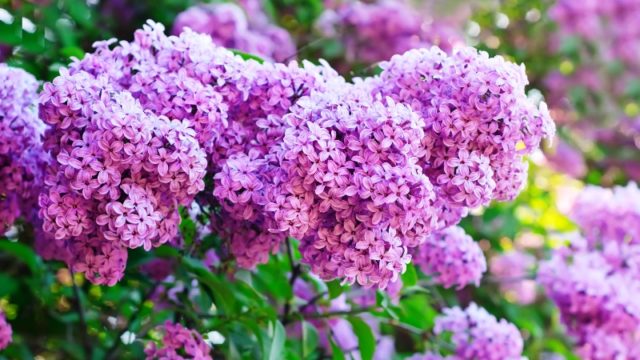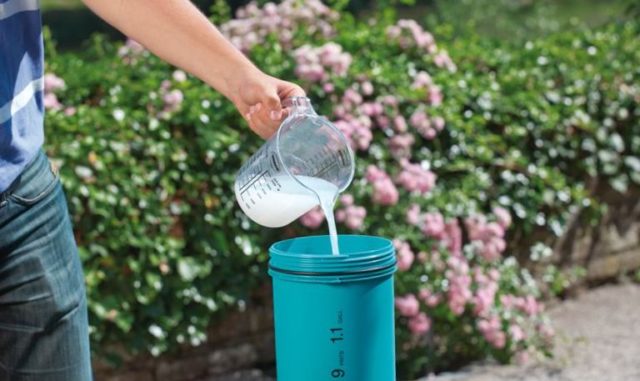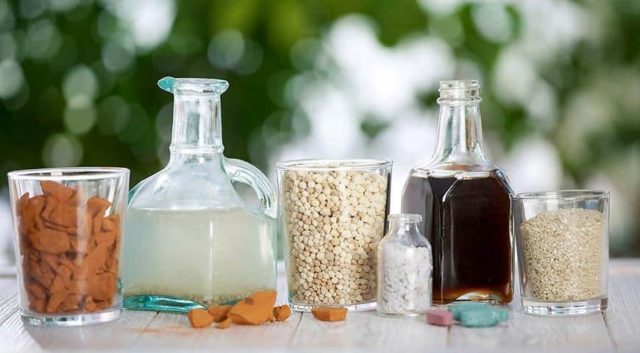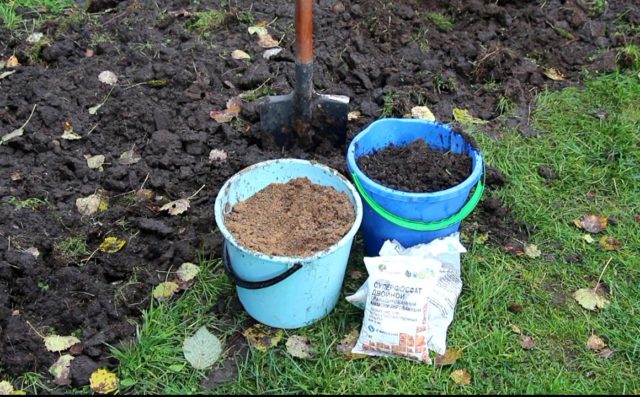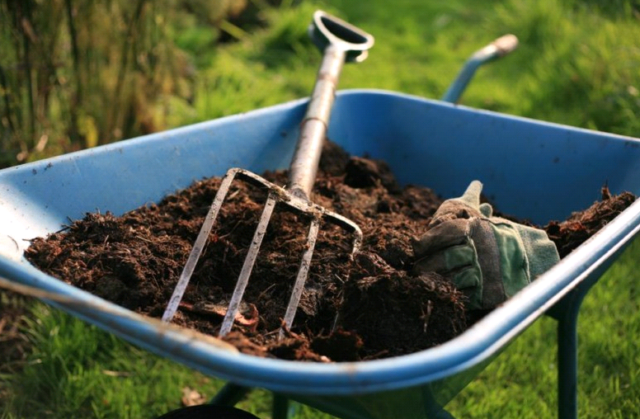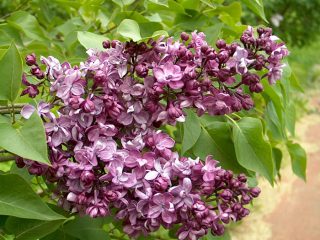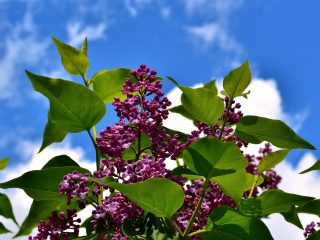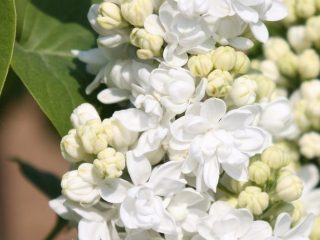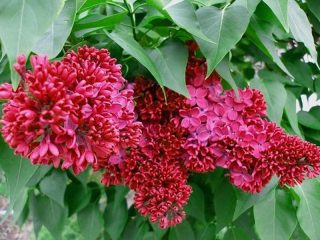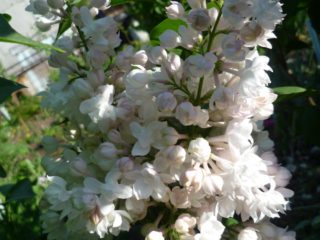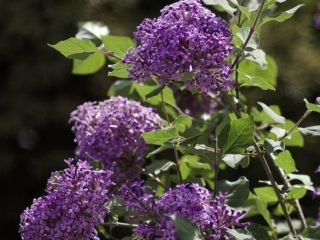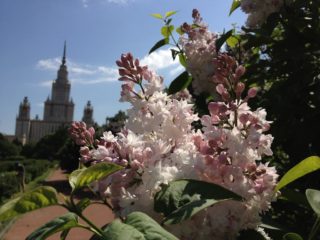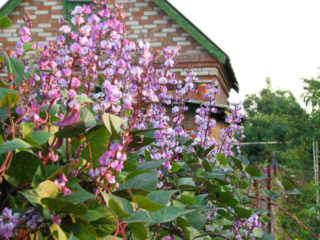Content
- 1 Why do you need to feed lilacs?
- 2 What fertilizers are suitable for lilacs?
- 3 How to fertilize lilacs after planting
- 4 How to fertilize lilacs in spring
- 5 Features of feeding lilacs after flowering
- 6 How and what you can feed lilacs in the fall
- 7 Foliar feeding of lilacs
- 8 How to apply fertilizers correctly
- 9 Conclusion
It is necessary to feed lilacs in the spring. Although the crop is considered wild, soil nutrition is the key to long and vibrant flowering. The bush needs to be fertilized throughout the season.
Why do you need to feed lilacs?
Ornamental shrub is an unpretentious plant. Undemanding to soil composition, can grow on any soil. Tolerates cold well. However, in order to get lush flowering, lilacs need to be fertilized. The bush itself can grow, of course, but there will be no bright inflorescences.
Benefits of eating lilac regularly:
- active growth;
- formation of large flowers;
- rich color;
- increased resistance to fungal and viral diseases;
- high frost resistance.
Rapid development and abundant flowering depend on the content of mineral components in the soil. Therefore, it is worth fertilizing lilacs from spring to autumn.
What fertilizers are suitable for lilacs?
Garden crops respond well to almost all nutrients.The composition and amount of fertilizing depends on the age, size of the bush, condition, soil composition, seasonality, and climatic conditions.
Organic
Lilacs need organic matter because it improves the structure, insulates the soil, and promotes the development of beneficial microflora. Organic components contain micro and macroelements in optimal proportions for the shrub.
The lack of natural elements in the soil provokes yellowing and curling of the leaves, the roots suffer, and the inflorescences noticeably decrease in size. The following are chosen as nutritional supplements:
- manure;
- humus;
- bird droppings;
- compost;
- peat.
Mineral
Nitrogen activates the formation of chlorophyll, the appearance of organic compounds in the foliage, and helps in the process of photosynthesis. The substance stimulates seedlings to quickly take root and grow.
Potassium increases the plant's resistance to diseases and adverse weather conditions, and promotes painless recovery after transplantation.
Phosphorus is responsible for metabolic processes and provides access to oxygen and minerals. Phosphorus affects cell division and bush growth.
Dolomite flour, limestone, chalk - fertilizers obtained by processing calcareous rocks. Used to normalize soil acidity.
Complex
There are complex compounds that include several mineral components at once: nitrophoska, ammophos, molybdates. These chemical elements are safe for shrubs and soil.
Wood ash can be classified as complex fertilizers. It contains over 30 useful elements. Both garden and garden crops are fed with ash. The substance combines well with organic matter.
How to fertilize lilacs after planting
For lilacs, light, well-drained soil is suitable, which will allow water and air to be delivered to the roots without delay. When planting seedlings, the soil is fertilized. Mineral and organic substances are added to the recess:
- Drainage made of gravel and small stones.
- Dolomite flour, lime if the soil is acidic.
- To regulate air and water permeability, sand is added to clay soil, and clay to sandy soil.
- Add a mixture of organic matter: humus and manure in equal parts.
- Superphosphate – 500 g, potassium sulfate – 150 g, bone meal – 300 g.
- The next layer is a bucket of fertile soil.
- All components are thoroughly mixed.
- After planting, be sure to mulch the bush with peat, dry leaves, sawdust, hay, and pine needles.
If the crop grows slowly, it means the root system is developing poorly. In this case, the seedling needs to be fed with organic matter 2 times in the spring-summer season.
How to fertilize lilacs in spring
Spring care for lilacs involves feeding with mineral and organic substances. Fertilizing begins immediately after the snow melts. In mid-March, the bush awakens and buds begin to form. Formation will be helped by a solution of mullein in proportions of 1:10. In the absence of this component, manure, compost, and bird droppings are used. Depending on the size, 1-3 buckets of nutrient liquid are enough for one bush.
The soil under the lilac is loosened to a depth of 6-7 cm, and then the mixture is poured. Afterwards, the circle around the trunk is mulched with hay and straw.This way, natural components will help preserve beneficial microelements in the soil.
Organic fertilizers are also applied in dry form. Then they perform not only the functions of feeding, but also mulch. On average, 10-25 kg of dry humus is consumed per lilac bush.
Feeding lilacs with mineral preparations occurs in the spring, when the shoots begin to grow. It's somewhere around mid-April. They fertilize the soil with nitrogen, which lilacs need for active growth and long and lush flowering. Gardeners recommend using ammonium nitrate in the amount of 80 g per bush or urea, 50 g. It is necessary to re-feed with nitrogen-containing preparations with the onset of May.
In addition, during budding, lilacs can be fertilized with wood ash. It contains enough useful elements for the full formation of buds. Ash weighing 200 g is dissolved in 10 liters of water. For an adult bush, 1 bucket of nutrient liquid is enough.
How to feed lilacs in spring for lush flowering
When the inflorescences have formed, the lilac should be fed with nitrogen-containing preparations one last time in the spring. Gardeners use ammonium nitrate, as well as potassium and phosphorus complex products for lush flowering.
In the flowering phase, the ground is already covered with grass, so before applying fertilizers, the circle around the trunk needs to be cleared and loosened. Around the same time, bright green beetles appear on the inflorescences and feed on the delicate petals. As a result, the lilac looks unattractive. Beetles must be collected in a timely manner.
Features of feeding lilacs after flowering
When the lilac has bloomed, the life process stops and the plant rests. However, young bushes need to be watered once every two weeks. Adults that are more than 4-5 years old do not need frequent watering, otherwise the roots may rot. They are more resistant to drought than young ones.
Wilted inflorescences are removed with sharp pruning shears. If you leave them on the bush, the lilac will spend a lot of energy on forming fruits. This will negatively affect further vegetation and flowering next year.
At the end of July, lilacs should be fed without waiting for autumn. However, it is not advisable to use nitrogen. Potassium and phosphorus preparations are mainly used. They have a beneficial effect on the root system. You can feed it with ash compounds, which nourish the plant well. Amount of fertilizer for one lilac bush:
- potassium – 25-30 g;
- phosphorus – 50 g;
- potassium compounds – 30 g.
Lilacs are fed once every 3 years.
How and what you can feed lilacs in the fall
With the arrival of autumn, activities for caring for lilacs continue to be carried out. It is at this time that comprehensive nutrition of the bush is second in importance. In autumn, lilacs require fertilizing with fertilizers in the maximum dosage. In this way, it will be possible to restore the composition of the soil.
It is not recommended to use nitrogen-containing preparations before winter, as they can provoke the growth of young shoots before frost. It will be useful to thin out the bush and do sanitary pruning.
In autumn, it is preferable to alternate organic and mineral fertilizers.But don't add everything at the same time. Use the same dosages as in spring. You can feed only organic matter: chicken droppings, manure, mullein, humus. Volume of nutrient solution per 1 sq. m. is 15-20 l.
Gardeners recommend using organic fertilizers in dry form. They are placed under the bush after the last watering before winter. A layer of mulch will retain moisture, protect the roots from frost, and will nourish the plant in doses. The amount of organic matter for one plant is 10-20 kg.
Foliar feeding of lilacs
The plant also prefers foliar treatments. As a rule, such feeding of lilacs is carried out in summer and autumn. Agricola is suitable for flowering bushes. A solution of microfertilizers is prepared as follows:
- the contents of the 25 g package are dissolved in a bucket of warm water;
- pour the nutrient mixture into a spray container;
- carefully process all leaves.
Instead of ready-made fertilizer, you can make the composition yourself. To do this, you need 1 g of copper sulfate, 5 g of manganese, 2 g of zinc sulfate and the same amount of ammonium molybdate. The amount of powder is calculated for 10 liters of water. The solution is enough to treat several lilac bushes.
How to apply fertilizers correctly
Before fertilizing lilacs, the area should be cleared of weeds and excess growth. Weed the circle around the trunk and loosen it to a depth of 8-10 cm. At the same time, try to do everything carefully so as not to touch the root system of the bush.
Gardeners usually feed lilacs in the spring with minerals dissolved in water or nutrients in a dry state. The mixture is not poured directly under the trunk, but a groove is made that runs along the perimeter of the bush. The distance from the center is 50 cm. Dry substances are embedded to a depth of 7-8 cm.
To obtain luxurious lilac blooms, dosages should not be neglected. It is important to follow the instructions and fertilize in moderation so as not to provoke an excess of nutrients. Otherwise, contrary to expectations, the overfed plant noticeably weakens, immunity and resistance to diseases decrease. Subsequently, the bush may be subject to viral and fungal infections and attacks by parasites. An overdose of nitrogen-containing drugs can provoke:
- sunburn;
- damage to the cortex;
- trunk rot;
- chlorosis;
- damage by scale insects, scale insects.
Lilacs will become exposed to weather conditions and their frost resistance will decrease. Frost cracks may appear, which in turn will lead to poor wintering.
You need to be careful with organic fertilizers. It is better to add more water so that the solution is not very concentrated. This mixture can burn the tender roots and destroy the plant.
Conclusion
You need to feed lilacs in the spring immediately after the snow melts and follow the diet throughout the season. Humus-rich, light, nutritious soil will be the best environment for growing ornamental shrubs. The quality of lilac flowering directly depends on the presence of useful elements in the soil.
